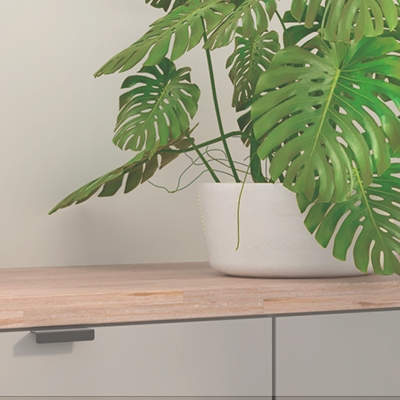
Design
8 Stunning Alternatives to Granite Countertops
10.16.2021

In This Article
Renovate confidently with Block
Get Your EstimatesA fresh coat of paint is a quick and inexpensive way to breathe new life into a bathroom. Whether you’re updating an 80s-era powder room or putting the finishing touches on an ensuite remodel, you’ll be surprised how much a lick of spa-inspired dusty blue or warm beige can transform a space.
But as any seasoned renovator can attest, painting a bathroom isn’t just about aesthetics. These splash-prone spaces often house excess moisture and humidity, requiring a durable, long-lasting finish that can tolerate damp conditions—daily showers and relaxing soaks only increase the potential for toxic mold and mildew growth.
Before you head to the hardware store, it’s essential to learn what kind of paint is best for bathrooms, according to the experts.
When selecting the best kind of paint for your bathroom, consider factors like ventilation and moisture. Do you have a bathroom exhaust fan to quickly wick away excess humidity, or do you have to rely on windows and natural air flow? How often do you use the shower or tub, and do you prefer steaming hot or lukewarm temps? The answers to these questions will help you determine what kind of paint for your bathroom is ideal.
Regardless of your setup, it’s best to avoid flat or eggshell finishes, especially around the shower or bathtub. While many prefer matte looks, these finishes are porous and can actually trap moisture, leading to mold growth and water damage. They’re best reserved for low-moisture rooms, like dining rooms or bedrooms. To err on the side of caution and protect your bathroom walls, consider the below expert-approved bathroom paints:
Mold resistant paints are ideal for cramped bathrooms that don’t have proper ventilation or bathrooms that have experienced mold issues in the past. As Bob Vila reports, these paints contain antimicrobial additives that actively ward off mold and mildew, both by killing existing mold and preventing new growth. Many options exist on the market: Benjamin Moore’s Aura Bath And Spa Matte Finish and Zinsser’s Perma-White, which you can find on Amazon, are two favorite choices
If your bathroom has a proper exhaust fan and mold is not a primary concern, Consumer Reports’ paint expert Rico de Paz recommends a satin, high-gloss, or semi-gloss finish. “They’re less likely to trap moisture and are easier to clean than flat or eggshell finishes,” he says. Bob Vila echoes that recommendation, adding that homeowners who don’t like the sheen of glossy paints can opt for satin instead, which is slightly less reflective but easy to clean.
Generally speaking, the higher the gloss, the more moisture protection the paint offers. You can even use multiple finishes in one bathroom depending on the amount of moisture in each area. For example, the walls and ceiling around a shower could use a satin or semi-gloss paint, while the walled area below a tub could use the protection of a high-gloss finish.
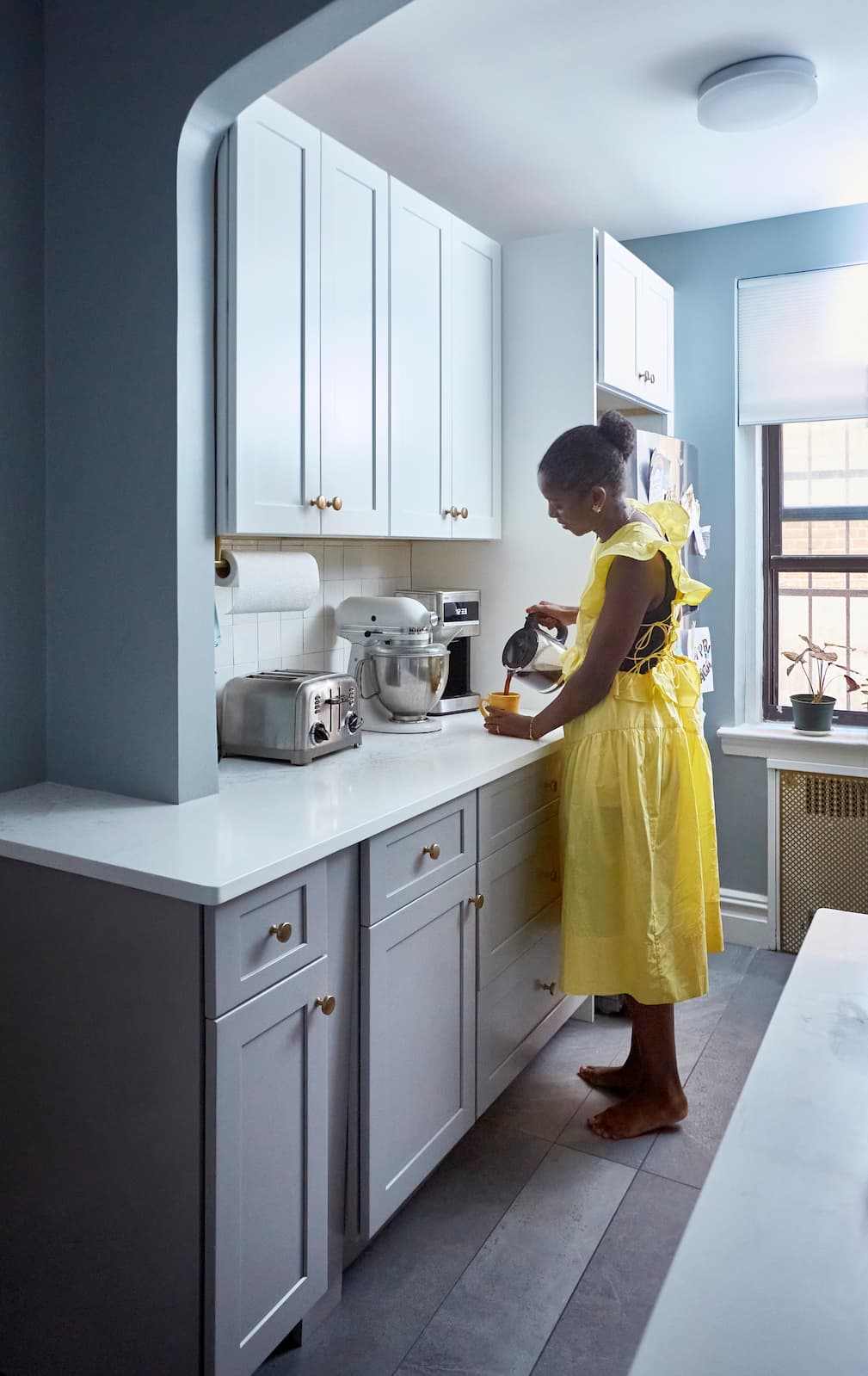
Renovate confidently with Block
Easily compare quotes from top quality contractors, and get peace of mind with warranty & price protections.
Thousands of homeowners have renovated with Block

4.5 Stars (100+)

4.7 Stars (100+)

4.5 Stars (75+)

Design
8 Stunning Alternatives to Granite Countertops
10.16.2021
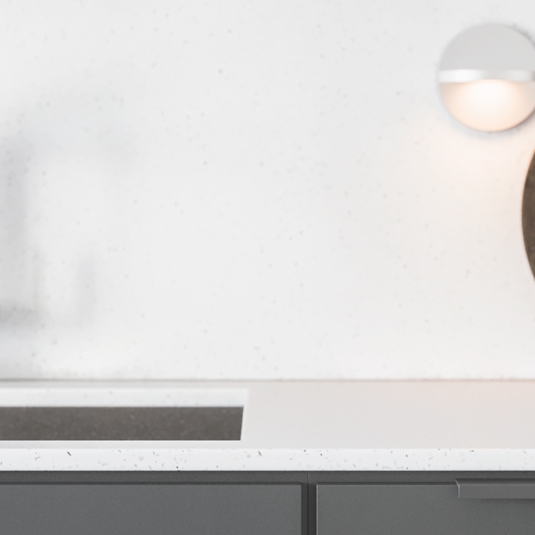
Design
What To Consider When Installing Kitchen Countertops
09.29.2021
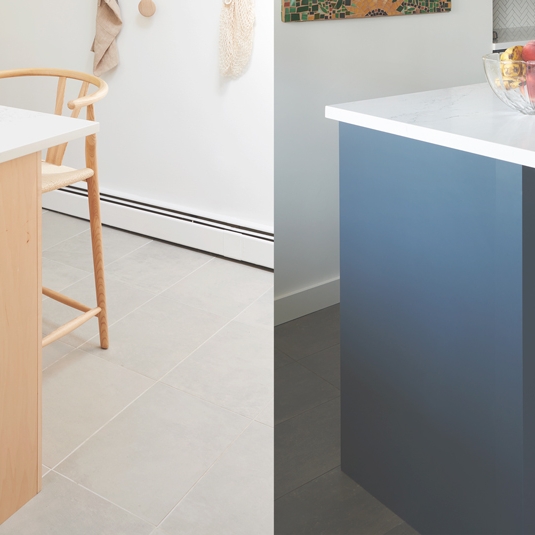
Design
How to Incorporate Freestanding Kitchen Cabinets into Your Space
09.29.2021
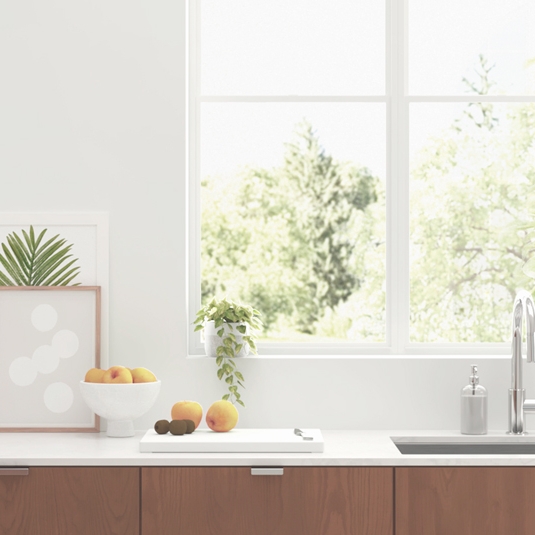
Design
The Best Paint Colors For Your Kitchen Walls
09.29.2021
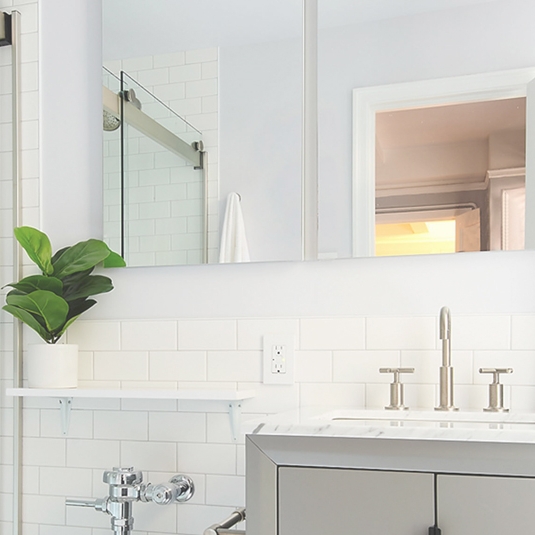
Design
The Minimum Bathroom Size – How to Make the Most of Your Small Space
09.28.2021
Renovate confidently